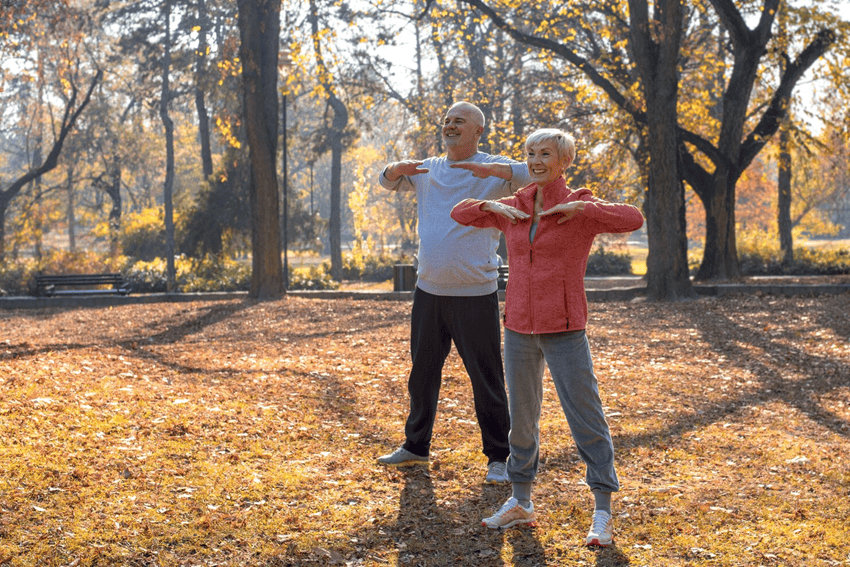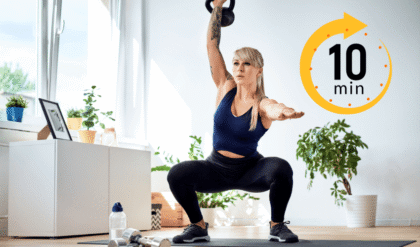People should live their senior years to the maximum, and physical activity is the most important aspect in terms of preserving physical health, intellectual ability and emotional response. With age, it is no longer all about going to the gym as it is about finding ways to move, connect and grow through delightful means that are sustainable.

This article explores practical and accessible ways for seniors to stay active, offering ideas that cater to various interests, abilities, and lifestyles. Whether it is by low-impact movement or a hobby, here are some of the ways to enable older adults to lead an active life.
Why Staying Active Matters for Seniors
Exercise helps the elderly use mobility, reduce the likelihood of chronic diseases such as heart disease or diabetes, and improve mood due to the release of endorphins. Activities such as learning new skills or interacting socially keep the brain alert and prevent intellectual decline.
Staying active also gives a person a sense of purpose and community, which reduces loneliness, a common concern among the elderly. You don’t have to run a marathon (again, run if you want!), but think about what can be done to stay mobile and active.
Physical Activities for Seniors
Low-Impact Exercise
In the case of older people, low-impact activities are gentle on the joints and improve muscle flexibility and strength as well as balance. Options include:
- Walking: A 20- to 30-minute walk in a park or neighborhood at least once a day improves heart health and can fit into any schedule. Additional social benefits can be gained by joining a walking group.
- Water Aerobics: Swimming or water-related classes are also effective forms of resistance that put no pressure on the joints, so these are suitable for older people with arthritis or older people with mobility challenges.
- Chair Yoga: When mobility becomes a challenge, chair yoga is ideal, helping a person to become more flexible and relieve stress. Many senior classes are held at community centers.
- Tai Chi: Tai chi is a slow, dynamic martial art that helps improve balance to reduce the risk of falls, a serious problem in older people.
Pro-tip: Start with short sessions, such as 10-15 minutes, and then increase the duration. Consult a doctor before starting any new exercise program.
Strength Training
Gentle strength training helps the elderly maintain their muscle mass and density. Gentle exercises at home, such as weightlifting, resistance bands, or body-weight exercises (e.g., wall push-ups), take very little time and effort. Many gyms have strength classes designed specifically for the elderly, as trained professionals are there to supervise the process.
Gardening
Gardening is a surprisingly effective way for the elderly to stay active. Planting, weeding, and digging require the involvement of multiple muscle groups, and increase a sense of accomplishment. In addition, being outside in nature and being mentally stimulated is also healthy. For those who are short on space, container gardening or raised beds are great options.
Mental Stimulation for an Active Mind
Learning New Skills
It is important to keep the mind as active as the body. Seniors can try:
- Online Courses: Sources like Coursera or community college programs held on local campuses include courses on topics like history, photography, etc.
- Music or Art: When a person learns to play an instrument or paint, it can provide creative inspiration and enhance cognitive abilities.
- Puzzles and Games: Games like crosswords, Sudoku or chess exercise the brain and can be a lot of fun to play alone or in a group.
Reading and Writing
Joining a book club or starting a journal will provide some intellectual stimulation and socialization. Writing memoirs or stories can also be a useful way to reflect on life experiences and libraries often have senior citizen book clubs.
Social and Community Engagement
Volunteering
Volunteering gives seniors a sense of purpose in life as they remain socially active. Other possible opportunities such as mentoring children, volunteering at food banks or volunteering with local charitable groups are beneficial and convenient. Many organizations appreciate the wisdom and experience of older adults.
Social Clubs and Groups
Joining clubs, knitting, bird watching or playing cards is helpful and makes seniors feel connected. Senior activities designed with older adults in mind are often listed at local senior centers or on local community boards. These meetings promote friendships and relieve isolation.
Intergenerational Activities
Visiting grandchildren or participating in local school-based programs, such as children’s daycare, helps seniors stay active and refreshed. Activities such as telling stories or making something, or teaching skills help create meaningful bonds.
Creative Outlets for a Vibrant Life
Arts and Crafts
Hobbies like knitting, painting, or even woodworking give your mind an energetic exercise and give you a sense of satisfaction in completing a task or achieving a sense of accomplishment. Most seniors’ centers have craft classes, or any senior can find online tutorials to experiment with.
Dancing
Dancing is an enjoyable way to gain physical, social, and mental benefits. From ballroom dancing to line dancing, there are many suitable dance classes available for seniors. You can also dance to your favorite music at home to boost your mood and get your body moving.
Tips for Staying Motivated
- Set Realistic Goals: Start with small, achievable activities to build confidence.
- Find a Buddy: Exercising or learning with a friend makes activities more enjoyable and keeps you accountable.
- Mix It Up: Try different activities to avoid boredom and engage different parts of the body and mind.
- Celebrate Progress: Acknowledge milestones, like walking an extra block or finishing a painting, to stay motivated.
Accessibility and Safety Considerations
Seniors with mobility challenges or chronic conditions can still stay active with modifications. For example:
- Use assistive devices like canes or walkers during exercise.
- Choose seated activities like chair exercises or tabletop games.
- Work with a physical therapist to design a safe, personalized plan.
Safety is key—always warm up, stay hydrated, and listen to your body to avoid overexertion.
The Joy of Staying Active
Staying active as a senior isn’t about chasing youth; it’s about embracing the present with energy and purpose. It could be a morning stroll, a vigorous dancing lesson, a peaceful afternoon of maze-solving, all these activities will make a difference. Introducing physical, mental and social activities in everyday activities will help seniors live healthier, more connected and lead a fuller life.
So, what is one thing you are looking forward to doing or doing with somebody you care about? Take things little by little and remain consistent because the journey to active lifestyle must bring happiness along the way.





